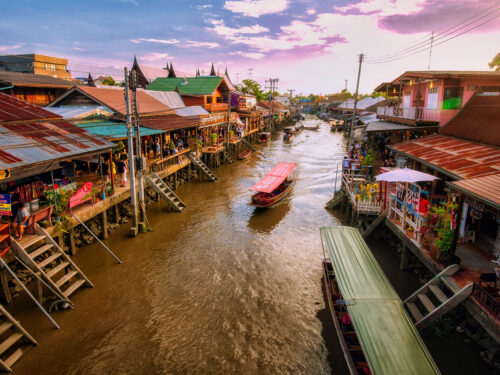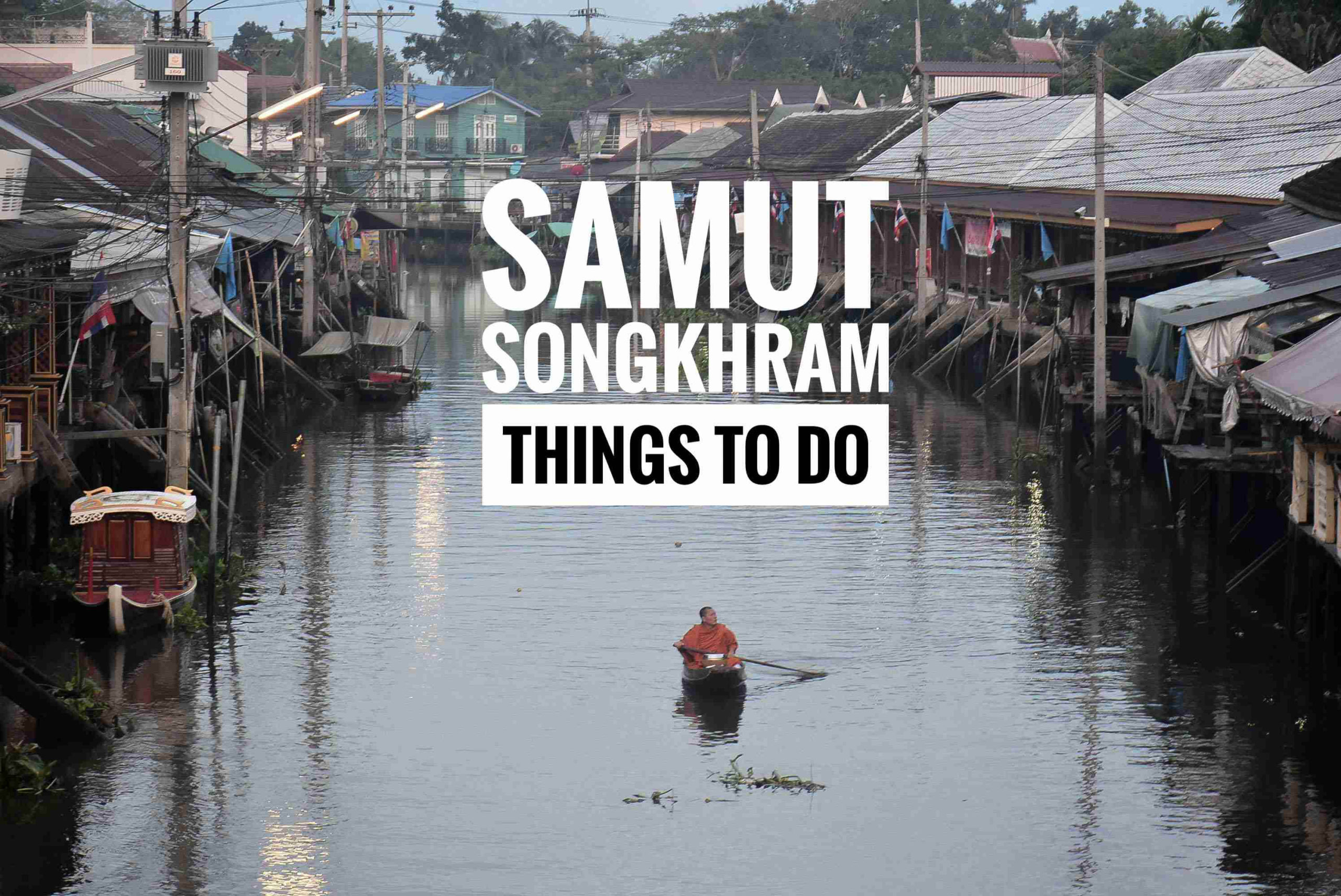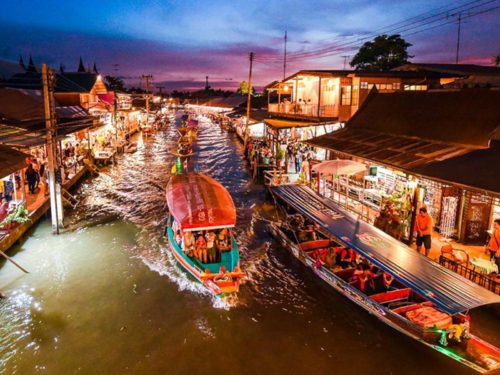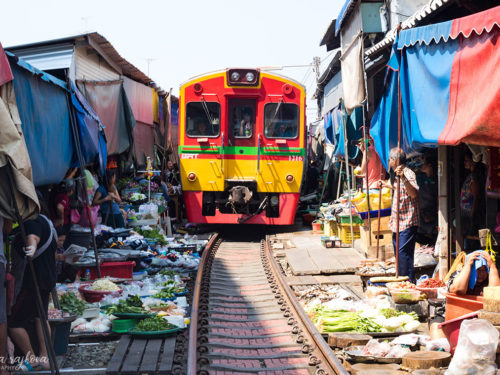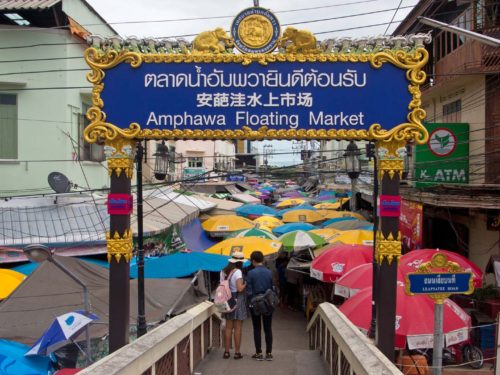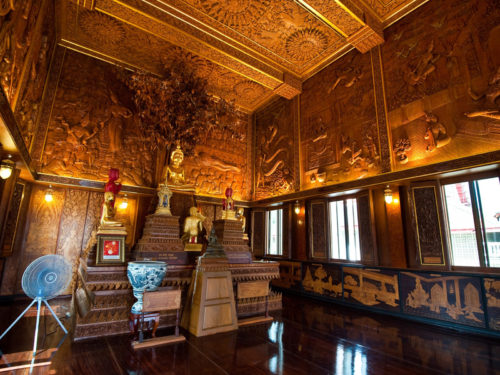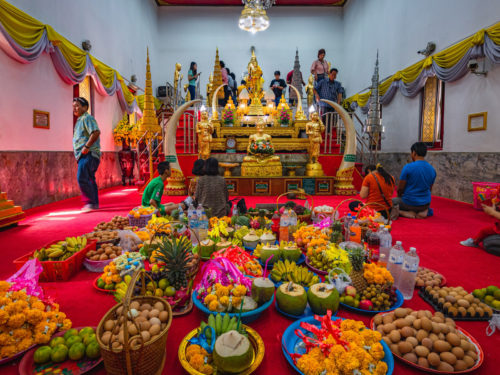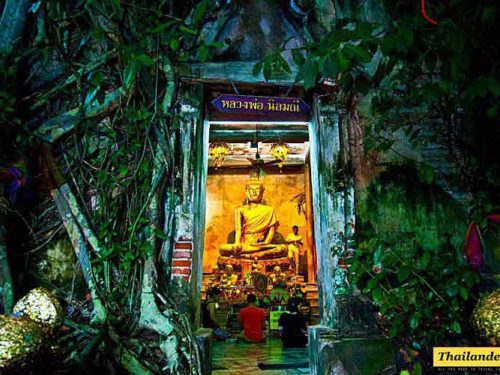5 Things To Do In Samut Songkhram, Thailand
Thai names can sometimes be confusing. Take Samut Songkhram for instance. Google the name, and chances are, you won’t find many things to do in this central province of Thailand. However, Google Mae Klong and you’ll see tons of activities, places of interest, and historical information.
Samut Songkham and Mae Klong mean the same province. In Thailand, locals know the place by Mae Klong more, which is its old name. “Samut” means ocean and “songkhram” means war. Literally, the province’s new name means war ocean. Mae Klong, on the other hand, derives its origin from the river with the same name. “Khlong” refers to the canals the river is spread through. The province is known to be the birthplace of Queen Amarindra, wife of King Rama I. It is also known to be a leader in coconut and salt production. It is surrounded by the provinces of Phetchaburi, Ratchaburi, and Samut Sakhon.
While most Thais are getting used to calling it by its new name, there are still traditional citizens who may be more familiar with its old one. So if you’re asking for directions, make sure you mention both names.
Check out some of the areas you’ll want to visit in Samut Songkhram:
1. Check out the flea market by the railway at Maeklong
There are about a hundred and one wet markets in Thailand. But the Maeklong Railway Market is unique in the sense that a train passes by every few hours or so to disturb the cramped set-up of the market, complete with specially made awnings and all. Locals, of course, are used to this cramped space by now, so much so that they sit too dangerously close to the railway so that there’s literally no space between their goods and the train when it passes by.
There is a warning bell that warns the marketers of the train’s coming a couple of minutes before, so most people jokingly call it Talat Rom Hoop or “Market Umbrella Close” because that’s what happens before the train comes. Everywhere around is a colorful display of fruits, vegetables, and seafood. If you’re a little claustrophobic, be sure to bring your own supply of water and a hand fan. Be sure that you don’t stand as dangerously close to the train as well. Locals know how to approximate just the right distance, but you might not!
2. Enjoy the exotic goodies at Amphawa Floating Market
Amphawa is known to be what Damnoen Saduak was 10 years ago – an authentic Thai floating market by the riverbank. It is about 114 kilometers (70 miles) from the airport. If you go by public transportation, you’ll reach it in half an hour. The riverbank comes alive especially on Fridays and weekends when most of the food stalls and boat cruises converge to make a colorful commercial scene.
There are a lot of photogenic parts to catch like the traditional Thai wooden architecture, the old temples, monks roaming around in the morning, begging for alms, and boats going back and forth between the banks to sell fruits and vegetables. There are also souvenir shops, restaurants, and ice cream shops that you can stop in.
3. Stroll around Wat Bang Khae Noi
Known for its ornate wood carvings made by famous craftsmen from Phetchabury, Wat Bang Khae Noi is a beautiful temple in Tambon Khwae Om, Amphawa. The temple was built around 1868 by an official named Khunying Chui Wongsarot. It used to float in a bamboo raft tied to a sacred Bodhi tree, the same tree where Buddha sat down to seek enlightenment. The walls now have wood carvings that depict Buddha’s life, from his birth to his death, and the Ten Incarnations or Jatakas of Buddha.
4. Pray at Wat Ban Laem
Again, like many names in Thailand, Wat Ban Laem is known by other names such as Wat Si Champa, a place that played an important role during the Thai migration period. When the Burmese attacked the city of Petchabury in 1764, the Ban Laem villagers fled to this temple to seek refuge. It is said that the villagers, who were mostly fishermen, were the ones who restored the temple. They even donated an image of Buddhat which they caught in a trawl net here.
There are two images of Buddha here, one sitting, the other standing. The other was brought to Petchabury, and the remaining one is enshrined in Wat Ban Laem. Wat Bang Laem is one of the most sacred temples for Thai Buddhists. It is considered a royal temple of the third class. It is now officially known by the name Wat Phet Samut Worawihan. You’ll have to ask permission from the abbot to enter this temple.
5. Take the unseen route at Wat Bang Kung
Wat Bang Kung is a concrete temple inside an overgrown Banyan tree. The roots of the tree completely overpower the temple so while it has concrete support, it looks like a temple has really just grown inside the tree. It is perhaps one of the most interesting temples in the Samut Songkhran region not just because of its architecture, but because of its role in the Ayutthaya War. The temple itself is known as Bot Prok Pho. Inside the tree is a huge Buddha statue that has been pasted with gold leaves by worshipers. Apart from the religious symols, there are also different statues of soldiers in 18th-century military uniforms, and about a dozen Thai kick boxers.
How to get to Samut Songkhran
There are no direct trains that’ll take you from Bangkok to Samut Songkhran, you will have to pass by Samut Sakhon or Maha Chai. From the Wongwian Yai Railway Station, take the train to Maha Chai. Once you’re there, walk to the main road and walk 200 meters (656 feet) going to the city pier. Take a boat from Maha Chai Pier to Tha Chalom Pier and you’ll reach the Ban Laem Railway Station. This station will take you to Samut Songkhram. Again, be sure to refer to it as Mae Klong as some locals aren’t used to calling it by its new name just yet.
Other things to do
